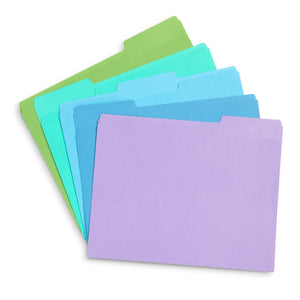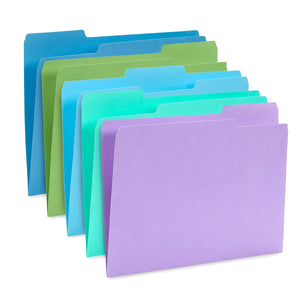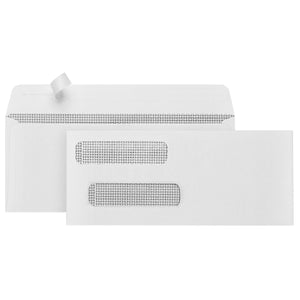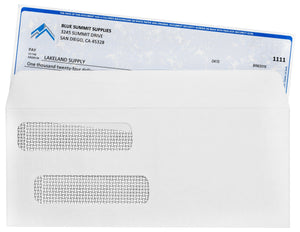Miles, yards, feet, inches: these are all everyday units of measurement in the United States. When asked how tall you are, how do you respond? In feet and inches! The American football field even boasts its length in yards. But why does the U.S. use completely different types of measurement than the rest of the world? And what is the real difference between a metric ruler vs inch rulers? We have the answers you’re looking for!
Table of Contents:
- Imperial vs. Metric Measuring Systems
- A Brief History of the Metric System
- Understanding the Imperial System of Measurement
- Understanding the Metric System
- Converting Imperial Measurements to Meters
- How to Convert Between Metric and Imperial Measurements
- Free Measurement Charts
- The Metric and Imperial Measuring Systems At-A-Glance
- Understanding Measurement Tools Like the Ruler
- Understanding How to Read a Ruler in CMs and Inches
- Other Frequently Asked Questions Regarding Rulers
- Different Types of Rulers and Other Measuring Tools
Imperial vs. Metric Measuring Systems
The metric system is the most commonly used measuring system outside of the United States. In fact, only two countries other than the United States don’t use the metric system: Myanmar and Liberia.
The metric system is practically a universal system of measurement.
Metric Ruler Vs Inch Ruler
The metric system measures small units in centimeters while the imperial system relies on inches. A quick and handy formula for conversions is
_____ inches x 2.54 = _________ cm
_____ cm ÷2.54 = _________ inches
For a visual representation, check this out.

A Brief History of the Metric System
Just thirteen years after the United States of America claimed independence, the French Revolution erupted. Much like the American Revolution where citizens wanted greater control over their day-to-day lives, the French Revolution fostered innovation and change. In 1795, The National Assembly of France requested a standardized system of weights and measurements. This led to one of the most significant innovations to arise from the French Revolution: the metric system.

The French Academy of Sciences stepped up and began working on a more logical standard on which to base their measurements. They ultimately decided on the length of the Earth from pole to pole, intersecting in Paris. This length was then divided, coming to 39.37 inches. They named this measurement “the meter” from the Greek word “metron”which means “a measure.” From the meter, the French developed the gram, based on a cubic centimeter of water.
Over time, other European countries adopted this system to help aid in trade.
So, Why Didn’t the United States Adopt the Metric System?
To make a long story short: Thomas Jefferson and other U.S. leaders thought the metric system would be short-lived because of its association with France and the French Revolution.
After it became apparent that the metric system was here to stay, many senators presented bills that would mandate the adoption of the metric system.
The potential to adopt the metric system even looked quite promising in the 1970s, when the U.S. National Bureau of Standards proclaimed the metric system would greatly benefit the country. A bill was passed and children began learning the metric system in schools to help adjust for the coming change.
That change never happened. Why? Most Americans, including business owners, thought the change indicated an unnecessary level of control the government was trying to assert over American business. Others thought America should be a leader in international standards, not a follower. And, yet again, the effort for the U.S. to adopt the metric system failed.
Now many believe it would be too costly and time-consuming to switch from imperial to metric.

By not adopting the metric system, products in the United States vary greatly in standard size than those found elsewhere. Our folders, dividers,binders, and standard envelope sizesare based on the inch. In the U.S., the most popular paper sizes are Letter paper which measures 8.5-inches by 11-inches and legal which measures 8.5-inches by 14-inches. In contrast, countries using the metric system have A4 as their standard letter-sized paper, which is 210 mm by 297 mm (our chart found hereis a great reference for paper sizes).
We do see someevidence of the metric system in our daily lives in the U.S, though. Some examples include 5-kilometer and 10-kilometer races, 2-liter bottles of soda, and science using the metric system as the standard.
The Origin of the Imperial System of Measurement
So, where did the United States get the imperial system of measurement?
This system dates back to ancient Egypt, ancient Rome, and Anglo Saxony.
The terms “pound,” “foot,” “yard,” and “gallon” are over one-thousand years old. The inch, foot, and yard all likely come from the Roman adaptation of the Egyptian cubit as a way to standardize trade.

Why “foot”? Because the Romans were measuring distance with their feet, or by paces. The mile was 5,000 feet.
Fascinating fact: the first Roman system of measurement was based on the finger.
Understanding the Imperial System of Measurement
The United States system of measurement recognizes the foot, the inch, the yard, the gallon, and the pound.
The standard gallon is based on the weight of water. In fact, one gallon of water is 10 pounds.
| Length Measurements in the Imperial System | |
| 1 foot | 12 inches |
| 1 yard | 36 inches/3 feet |
| 1 mile | 5280 feet |
An inch is broken down into smaller increments based on fractions.
Understanding the Metric System
The metric system uses liters for volume and meters for length. When it comes to mass, this system uses the kilogram. All units in the metric system use 10 as their base. Prefixes denote the decimal or fraction.
| Length Measurements in the Metric System | |
| Prefix | Amount |
| Kilo | 1000 |
| Hecta | 100 |
| Deka | 10 |
| Base Unit | 1 |
| Deci | .1 |
| Centi | .01 |
| Milli | .001 |
One meter = 10 decimeters = 100 centimeters = 1000 millimeters
1 kilometer = 1000 meters
Converting Imperial Measurements to Meters
1 inch = 2.53 centimeters = 25.4 millimeters
1 mile = 1.60935 kilometers = 1609.34 meters
1 yard = 0.9144 meters
How to Convert Between Metric and Imperial Measurements
Inches to Centimeters
_____ inches x 2.54 = _________ cm
_____ cm ÷2.54 = _________ inches
Feet to Meters
______ feet ÷3.281 = _______ meters
______ m x 3.28084 = ______ feet
Miles to Kilometers
______ miles x 1.60934 = ______ km
______ km ÷1.60934 = ______ miles
Pounds to Kilograms
______ pounds ÷2.205 = _______kg
______ kg x 2.20462 = _______ pounds
Gallons to Liters
______ gallons x 3.78541 = ______ liters
______ liters ÷3.785 = ______ gallons
 |
Click here to download our free measurement charts! |
The Metric and Imperial Measuring Systems At-A-Glance
The Metric System of Measurement |
The Imperial System of Measurement |
| The Metric System of Measurement is a decimal-based system that uses a factor of 10. Calculating between measurements simply requires moving the decimals place right or left. This system is also called the International System of Units or SI. | The Imperial System of Measurement, also known as “The British Imperial System of Measurement,” is used by the United States. |
|
Length is measured in meters |
Length is measured in inches, feet, yards, and miles. |
|
Mass is measured in kilograms. |
Weight is measured in pounds and ounces. |
|
Area is measured in hectares. |
Area is measured in acres. |
|
Volume is measured in cubic meters or centimeters. |
Volume is measured in ounces, pints, quarts, and gallons. |
Understanding Measurement Tools Like the Ruler
Now that you have a brief understanding of how the imperial and metric systems of measurement compare, it’s time to take a closer look at how we measure these units.
The Ruler
When you first learned about measuring, you were probably introduced to the ruler. The ruler is the most common measuring device.
In the United States, most rulers have the imperial measurements along one long edge while the other long edge shows the metric measurements.
A standard ruler is 12-inches long and 30 centimeters in length.
It is likely your ruler will state “inches” or “cm” to make it easier to tell which side is which.
Each of these measurements has a perpendicular line to denote where this measurement falls on the ruler. They are the longest lines on the ruler.
The inches are divided into smaller segments: halves, quarters, eighths, and sixteenths.
As the value or length decreases, the size of the line denoting each decreases.
The centimeters are divided into millimeters (10 per centimeter).
Understanding How to Read a Ruler in CMs and Inches
Reading a ruler is simple.
- If you have a clear ruler, place the 0 on the inch side or the cm side on a terminal line or item you want to measure.
- Then, run the ruler parallel to the item, line, or space, you are measuring.
- Where the line or item ends, note the number and fraction. That is your measurement.
- If you are measuring a rectangular object, repeat this step on the other length. If you are measuring an irregular or triangular object, repeat this step for each side.
For example:
If you were to line your ruler up to a standard #10 envelope, you would find the shorter side is 4 and 1/8 inches and the long side is 9 and ½ inches.
Other Frequently Asked Questions Regarding Rulers

What is a metric ruler or mm ruler?
A metric ruler only shows the metric system measurements of millimeter and centimeter. These are also referred to as scientific rulers or laboratory rulers. These are also called “metric rulers,” “centimeter rulers” or cm rulers,” and “millimeter rulers” or “mm rulers.”

How do I accurately use a ruler?
When using a ruler to measure length, it is recommended you try to find the smallest unit to your measurement to ensure the most accurate length.

Where can I find quality rulers?
There are many website and stores where you can buy quality rulers. Office supply stores and office supply online retailers often offer bulk packs of shatterproof rulersthat can withstand normal day-to-day use.

What is the best ruler?
Many find clear rulers to be the most accurate since the user can see through and more accurately align the zero-line with what they are measuring.
Different Types of Rulers and Other Measuring Tools
Measuring Tape
A measuring tape is often used to measure length greater than 12 inches. The “tape” is usually made of thin metal and has a metal foot or “end clip” on the end to hold onto an edge of what is being measured.
A measuring tape can be between 12 and 100 feet in length. This compact device makes it an easy-to-carry measuring tool because it has a spring at the center that the measuring edge wraps around and winds itself into.
They often feature the imperial measuring system on one side and the metric system on the backside.
When reading a measuring tape, pay attention to the inches and the fraction closest to the end point of what you are measuring.
Because the end clip of a measuring tape can cause inaccuracy, most builders recommend a method called “burning an inch” if you want the most accurate measurement using a measuring tape. To do this, align the “1-inch” marker on the end of the item being measured, run the tape the distance you want to measure, then subtract one inch from the total length.
Best Measuring Tape
Most home improvement specialists prefer the Stanley PowerLock measuring tape. You can find this measuring tape online or in stores. It features a lock button and a sturdy tape that will not easily break.

Folding Rulers
A folding ruler is a series of 12-inch or smaller length rulers held together with hinges and increasing in size. Folding rulers can feature imperial, metric, or a combination of measurement systems. They can be made of different materials such as wood (the most common), aluminum, steel, plastic, or fiberglass. They are most often used by carpenters.
The advantages of a folding ruler include:
- It can be easily transported due to its compact size once folded.
- It can measure angles
- It can measure two sides at once.
- It offers vertical measurements since it becomes rigid when extended.
- It can be used with just one hand when the user has to hold something with the other hand.
Best Folding Ruler
The Wiha 61620 Outside Reading 6-inch Ruler is often preferred because it folds down to 6-inches in length and can be easily carried in a tool belt or pocket. It also features a scale on both sides and a 6-inch extension.

Sewing Rulers and Measuring Tools
When it comes to sewing and seamstress work, a different set of measuring tools comes in handy. Many seamstresses and tailors prefer to have several measuring devices, some of which have become standard. Most sewing rulers are metal or clear acrylic and feature grid lines that help the user measure horizontally and vertically at the same time.
These tools include:
- A Blueprint Mat or Cutting Mat
- A French Curve Ruler
- A Hip Curve Ruler
- A fashion or styling-design curve ruler
Best Sewing Ruler
The Fiskar 12-87577097J Acrylic Rulermeasures 6 inches by 24 inches and features 30, 45, and 60-degree angles. The thick acrylic and clear style make this ruler a must-have for most sewing projects!

Quilting Rulers
Quilters, like seamstresses, often use rulers that are broader in size and made of clear acrylic. These rulers are also called “grid rulers.” The best grid rulers have angle markers to help square the quilt pieces up easily.
Best Quilting Rulers
The Omnigrid R2595S 9.5-inch Value Packis designed to make traditional quilting simple. The square grid helps quilters cut and measure patterns quickly and the clear acrylic adds accuracy.
The Omnigrid R6524is versatile and easy to use. The multicolor markers make taking measurement quick and easy. This ruler features 30, 45, and 60-degree angle lines.
The Omnigrid 24 by 36-inch Gridded Matis a perfect surface on which to cut fabric. It features inch markers and angle markers to help make cuts more accurate.

Which do you prefer – metric or imperial? Let us know! For more information on office supplies, check out our blog. To see what we’re up to, follow us on Twitter, Instagram, and Facebook. And if you have any questions or just want to say hey, send us an email! Larry would love to hear from you.
 For more informative articles about office supplies, subscribe to our email newsletter!
For more informative articles about office supplies, subscribe to our email newsletter!
Never fear, you won't begin receiving daily sales emails that belong in a spam folder. Instead, we promise a fun weekly roundup of our latest blog posts and great finds from across the web. And if you lose interest, it's always easy to unsubscribe with a single click.












4 comments
Bigg Nutrition
Very interesting and informative article. Thanks for sharing such type of precious article.
K Store
Great article you shared, Thanks for sharing such type of precious article.
Carl Blum
Hello: I worked 24 years at Bosch, a metric company. Now that I am retired I am working in my own shop mostly in metric. Working in metric helps me see it as a unified system that you can convert form one measurement (mm) to another (m) by simple multication (mx1000=mm). Now I see inches as a hodgepodge of internal conversions that require look up charts. ie: yard x 576=1/16" and every fraction has a different multiplier. And don’t get me started on “Number”, “Letter” and Fraction drill bit sets. So in my shop I have found using metric units has made my work easier and less frustrating, in spite of most of my materials being mostly english sizes, sort of. ( 3/4" plywood is now usually 11/16" thick, etc. ) Thanks, Carl.
afework chekoll
#many thank you!! i appreciate you!!